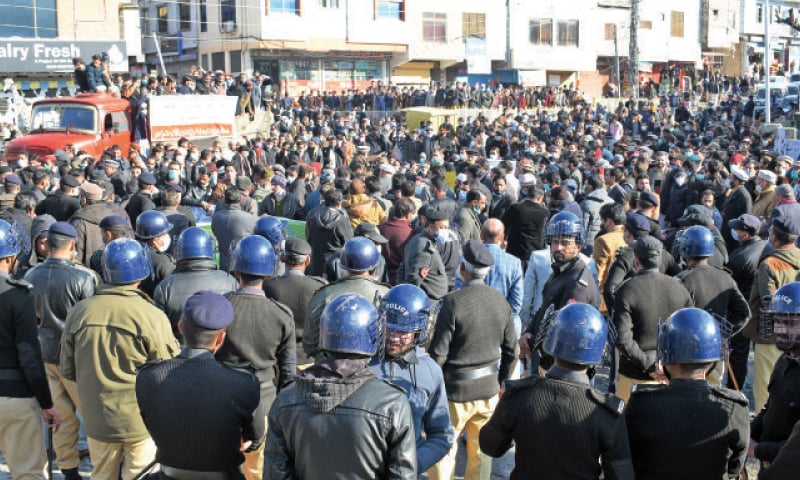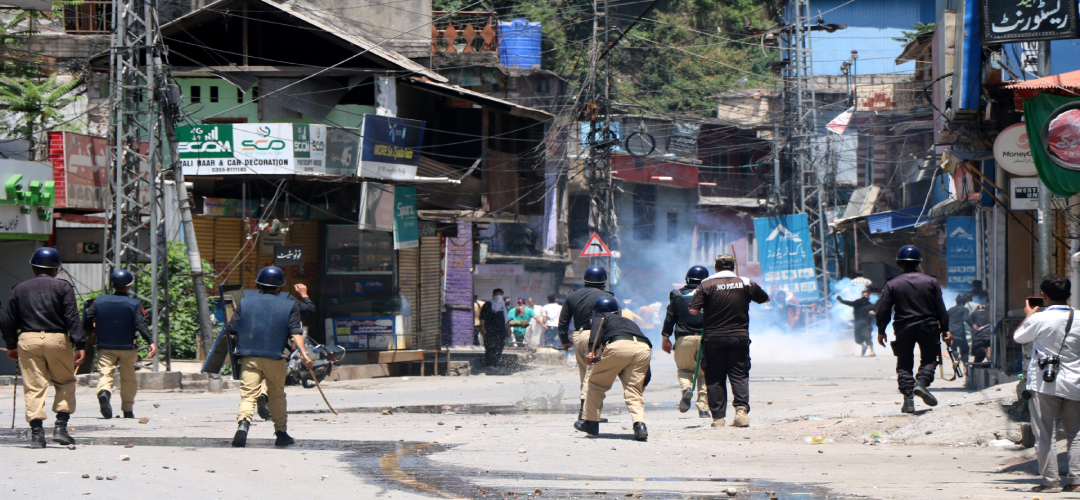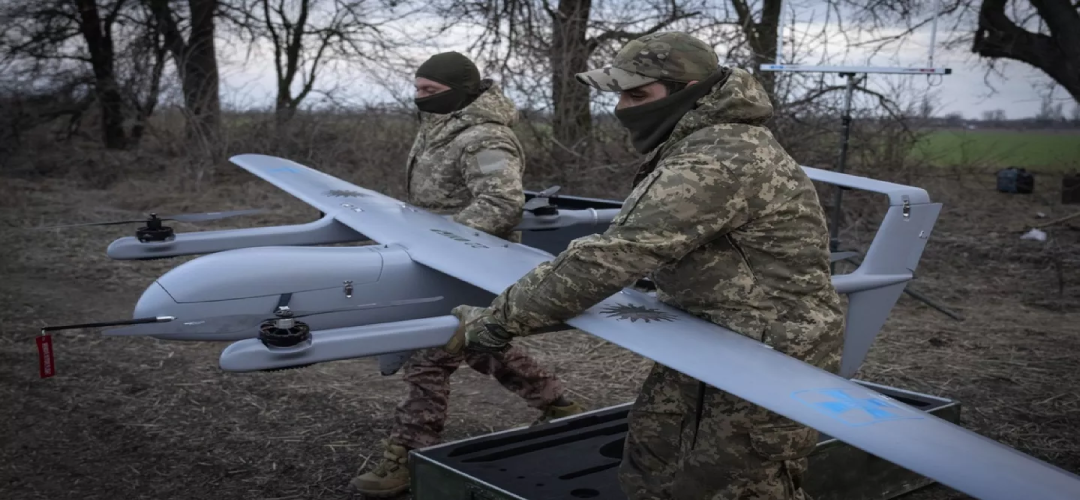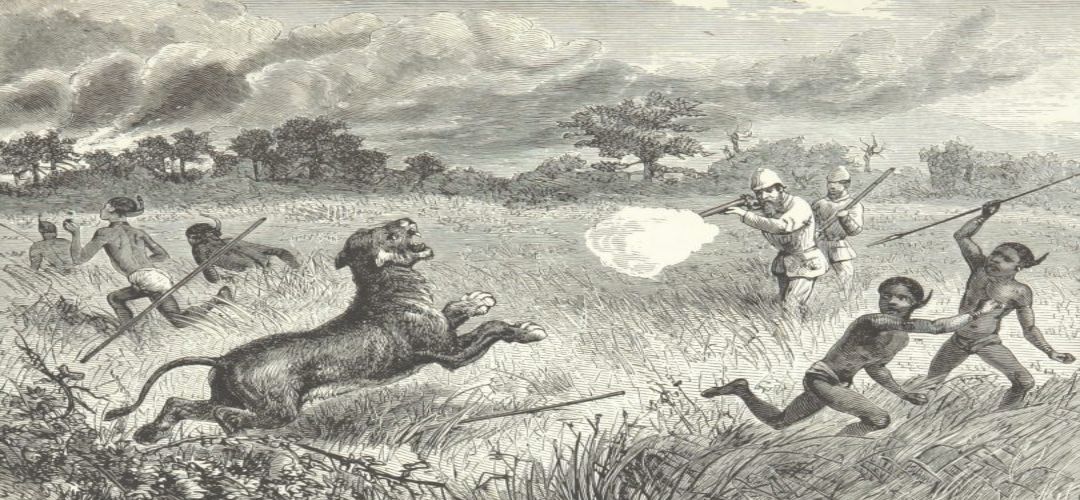Pakistan-Occupied Kashmir (POK) has been steadily simmering for the last year till it exploded last week.
Things were not exactly rosy in POK, which was evident for over a year as there was a steady rise in opposing voices from this strategically important part of South Asia, divided between India and Pakistan. That the worsening economic situation in Pakistan triggered this disgruntlement would be putting it too simplistically; the malaise goes far deeper.
Jammu Kashmir Joint Awami Action Committee (JAAC) had planned a “long march” to Muzaffarabad on May 11.
Earlier this week, many major towns and rural hinterlands of POK were the scene of mass protest, a march to its capital, Muzaffarabad and a flood of posts on social media giving a ground-level view of how Kashmiris were chasing bedraggled-looking policemen through forests and throwing them from cliff sides. There was a total wheel jam and shutter-down strike across the territory, leaving at least one police official and at least three protestors dead and more than 90 others injured, some critically.
Of course, the Pakistan government has imposed a news blackout on the happenings but from the response of the Prime Minister, it was clear that this was being taken as a serious challenge. Without batting an eyelid, the central government tried to appease the enraged Kashmiris by agreeing to release a grant of a $86.25 million subsidy that would cater for targeted subsidy on flour and freeze electricity tariff on June 22.
Background
The Jammu and Kashmir Issue is too well known to go into its history. Suffice it to say, while Pakistan made hay trying to act as a saviour of ‘oppressed Kashmiri brethren’ in Indian Jammu Kashmir’ in the international space for the last 75 years, the condition of the part under its control has been steadily deteriorating.
Now, the chickens are coming to roost, as there have been calls made publicly that POK would seek reunification with Indian Jammu and Kashmir as it has been neglected for too long by Islamabad and suffered in the bargain.
Since last year, the prices of food items and utilities have been steadily heading north, in some cases most dramatically. With low rates of employment and an economy based entirely on remittances, the economic sustenance of the people of POK was not sustainable for long, with a dramatic makeover in economic and governance policies. Mere slogans and calls for “Kashmir Unification Days” cannot replace hard-headed, long-term economic initiatives and outside investments into the region, as India is endeavouring for last so many years in J&K.

Analysis
POK is largely a rural population with few important towns or cities that can become commercial/ industrial hubs. The poor infrastructure combined with a harsh and rugged mountainous terrain impedes industrialisation and investments. It is for this reason that India is spending billions of dollars to connect J&K with a record-breaking railway line and modern all-weather highways. Traders in POK are forced to make all their purchases in the Pakistani heartland of Punjab and ship them on trucks and buses into POK, substantially adding to the cost that a common Kashmiri pays for his daily need items, from a pin to mobile and especially food. As record-breaking inflation (reaching an all-time high of 37.97 per cent in May of 2023) ravaged the Pakistani economy for the last one year, the retailers passed on the higher costs to consumers, igniting widespread public outrage and prompting popular unrest across the entire POK.
The ruling elites of POK have entirely lost whatever little confidence they enjoyed from their constituents. Over the decades, the same constricted group of people have lorded over the masses in the political scene of POK, duly backed by the Pakistani establishment, so that they toe the line delineated by Islamabad. In fact, most ruling elites spend the bulk of their time with their families safely and comfortably ensconced in multi-million villas sited in exclusive gated communities in Islamabad. These elites have benefited from the obsession of the central government on the security prism concerning the conflict over J&K.
The people of POK have bypassed their ruling elite to organise and lead the ongoing protests. Ignoring mainstream political parties, grass-roots action committees were formed at village, town, and market levels, which are non-hierarchical and have a diffused leadership structure. This is what is making any negotiations with the protesters by the Central government very elusive. Most protestors are youths who are unemployed and extremely frustrated. As per Daily Dawn, POK grapples with one of the nation’s highest youth unemployment rates.
The economy is largely remittance-based, which fuels a consumption-based economy rather than a more productive home-grown economy that generates income and sustains an ecosystem of shared economic well-being. With Gulf states tightening the inflow rates of migrant workers and stiff competition from India, Sri Lanka, Nepal and Bangladesh for shrinking numbers of unskilled/low-skilled jobs in GCC, this route for employment is also slowly diminishing.
As mentioned earlier, POK is largely an agriculture-based society with small farmers eking out a living from rain-fed fields. Unlike Punjab and Sindh, POK has little or no irrigation infrastructure, although it is host to dams like Mangla, which not only meet the electricity demand of the rest of the country but also irrigate vast tracts of Punjab, making its landlords rich and powerful. Not surprisingly, one of the major demands of the protestors is to be supplied electricity at the cost of production and not the inflated price that the rest of the Pakistani population is being forced to pay.
Writing for the Friday Times (14 May 24), Dr Danish Khan, an Assistant Professor and Andrew W Mellon High Impact Emerging Scholar at Franklin & Marshall College says, “The ongoing protest movement serves as a de facto vote of no confidence in the existing political elites due to their political expediency and their failure to envision alternatives to neoliberal policies. Islamabad faces a simple choice: remain wedded to the political elites of Muzaffarabad or listen to the voices of ordinary people.”
Assessment
- While Pakistani rulers may call the ongoing protests in POK as ‘India inspired’, they can no longer close their eyes to the ground realities. Both Islamabad and the elites in Muzaffarabad will have to delink the governance of POK from the prism of security around the Kashmir issue with India and start real economic and political reforms in the region.
- The discontent boiling over in POK is symptomatic of the state of the economy and governance in the rest of Pakistan. Similar disgruntlement is brewing under the surface in Sindh, KPK, and Baluchistan. It is only a matter of time before they, too, boil over if Islamabad does not get its act together and end the political instability created over the treatment meted out to Imran Khan and his PTI party.
- India has to watch the developing situation carefully, as such protests tend to spill over the volatile border separating the two Kashmiris. While so far, the situation in J&K has remained peaceful, and the voting in the parliamentary elections was encouraging, India, too, has to work hard and long to make J&K prosperous and its people satisfied citizens of the Indian Union.




